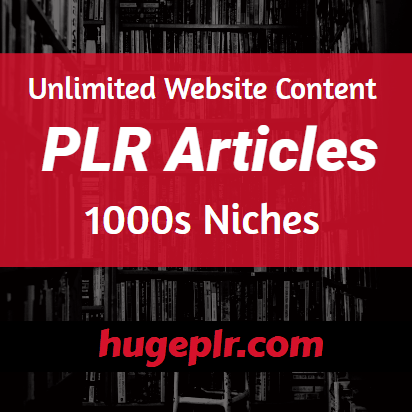In the vast and dynamic landscape of digital marketing, content remains king. From engaging blog posts and informative articles to comprehensive e-books and compelling marketing materials, content creation is a fundamental aspect of building a successful online presence. However, consistently producing high-quality, valuable content can be a daunting and time-consuming task. This is where PLR (Private Label Rights) content comes into play. In this comprehensive guide, we will explore the world of PLR content, understand what it is, how to use it effectively, its benefits, potential pitfalls, and how it can transform your content marketing strategy.

What is PLR Content?
PLR stands for “Private Label Rights.” It is a type of content that allows individuals to purchase or acquire the rights to reuse, edit, and even rebrand the material as their own. Essentially, PLR content provides a framework for content creation. This framework can include articles, e-books, reports, graphics, videos, and more. While the content is created by someone else, PLR allows you to modify it to suit your brand’s voice, message, and target audience.
The Mechanics of PLR Content
PLR content typically comes with certain rights and restrictions, which can vary from one package to another. It’s crucial to understand these rights to use PLR content effectively and legally. Here are the key elements of PLR content:
- Edit and Customize: PLR content is yours to modify. You can edit, rewrite, or customize it to make it unique and relevant to your audience.
- Rebrand: You can add your branding elements such as your logo, company name, and contact information to establish your identity.
- Publish: Use PLR content for various purposes, including blog posts, social media, e-books, email newsletters, and more.
- Resell: In some cases, PLR content allows you to resell it to others, potentially creating an additional revenue stream for your business.
- Restrictions: While you have substantial freedom with PLR content, it’s essential to respect any restrictions set by the content provider. Some PLR content may have limitations on how it can be used or where it can be published.
The Benefits of Using PLR Content

PLR content offers a range of advantages for individuals and businesses alike:
- Time and Cost-Efficient: Content creation can be time-consuming. PLR content provides a ready-made foundation, saving you valuable time and resources.
- Consistency: You can maintain a consistent flow of content on your website or blog, even when you’re short on time or creative ideas.
- Expertise: PLR content often comes from knowledgeable sources, allowing you to tap into their expertise without the need for in-depth research.
- Customization: PLR content is versatile. You can adapt it to align with your brand’s voice and messaging.
- Diverse Content Types: PLR content is available in various formats, from articles and blog posts to e-books, videos, and more.
- SEO Benefits: Using PLR content can enhance your website’s SEO efforts, as fresh, relevant content can improve search engine rankings.
Using PLR Content Effectively
While PLR content offers numerous advantages, its effectiveness depends on how you use it. Here are some tips for making the most of your PLR content:
- Quality Matters: Choose PLR content from reputable sources known for providing high-quality material. High-quality content can be easily customized into valuable, original pieces.
- Edit and Personalize: Avoid using PLR content without modification. Edit and personalize it to make it unique and relevant to your audience.
- Know Your Audience: Understand your target audience and tailor the PLR content to address their needs, questions, and interests.
- SEO Optimization: Optimize PLR content for search engines by including relevant keywords, meta descriptions, and alt tags for images.
- Consistency: Maintain a regular publishing schedule to keep your audience engaged and informed.
- Stay Compliant: Always adhere to the rights and restrictions associated with the PLR content you use.
- Add Value: Supplement PLR content with your insights, experiences, and additional research to provide added value to your readers.
Potential Pitfalls of Using PLR Content
While PLR content can be a valuable resource, it’s essential to be aware of potential pitfalls:
- Duplicate Content: If you use PLR content as is without customization, you risk publishing duplicate content, which can harm your SEO efforts.
- Relevance: Ensure that the PLR content is relevant to your niche and audience. Irrelevant content can confuse or alienate readers.
- Quality Control: Not all PLR content is of equal quality. Select your sources carefully to maintain high standards.
- Overuse: Overusing PLR content can lead to a lack of originality and a disconnect with your audience.
Conclusion: Maximizing the Potential of PLR Content
PLR content is a powerful tool in your content marketing arsenal. When used wisely, it can save time and resources while providing valuable content to your audience. To reap the full benefits of PLR content, remember to customize, optimize, and add your unique touch to make it truly yours. By leveraging PLR content effectively, you can enhance your content marketing strategy and engage your audience with compelling, relevant material.


